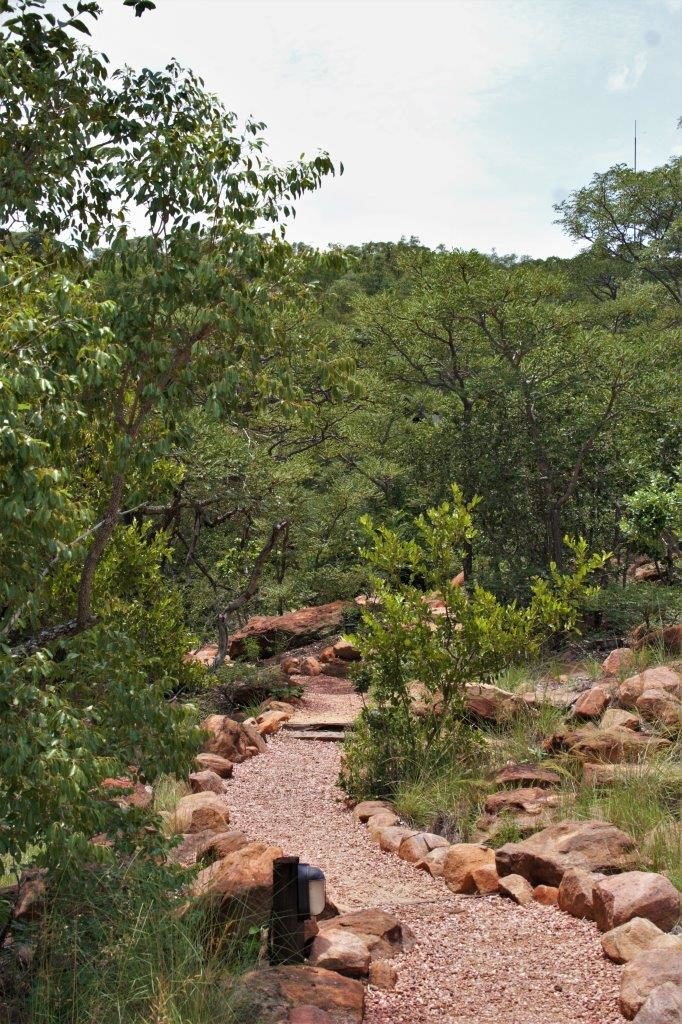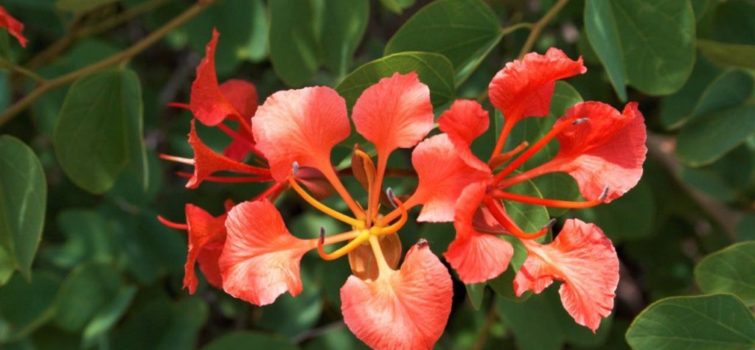The Different Trees In Makweti Camp
The early summer rains have left the reserve looking spectacular this year. The rivers are in full flow, the floodplain areas in the central parts of the reserve are filling, and the flora has responded to this with great enthusiasm. The Makweti camp hasn’t been this lush or in such glorious splendour since February 2017, and the healthy diversity of plant life is amazing.
We are fortunate to stay in a camp that boasts a wonderful diversity of the trees found in the Waterberg region. Within the small footprint of Makweti, some healthy specimens are revelling in the Summer rain.
Kudu Berry (Pseudolachnostylis maprouneifolia)
The Kudu Berry is well known on the reserve. Usually about 4 – 6m in height, it can grow to 12m in areas with favourable conditions. It is recognised by light grey bark, which is fissured into segments of squares or rectangles. The leaves are ovate, sometimes curling inwards. Yellow petioles are clear at the base of the leaves. The flowers are small, greenish-white with a faint musky smell. It is best recognised by its fruit, particularly this time of year, but usually from May onwards. The small spherical fruit is green with faint white spots, falling off the tree whilst still green and ripening on the ground to a yellow-brown colour with a wrinkled exterior. These trees are monoecious representing male or female flowers on a single tree.
Just outside the reception area is a magnificent specimen of the Kudu Berry tree. It creates a green archway as you approach the Indaba Lounge from the main lodge area and provides valuable shade. This deciduous tree is a welcome relief for the Summer heat, but allows warming sunlight into the office during the Winter months.
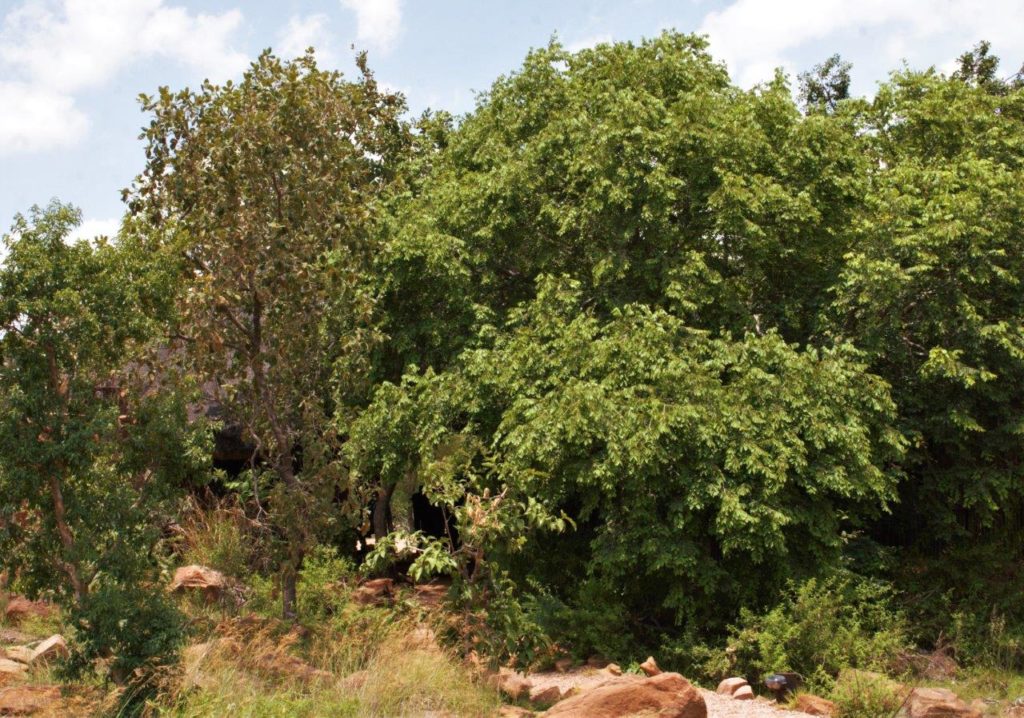
It is browsed on by kudu and elephant and the Vervet Monkeys are often seen playing in it, raiding the tree of its abundant fruit. There are many specimens of the species in the camp, particularly around chalets 4 and 5.
Traditional uses of these trees include the following:
- Bark extracts are used to treat upset stomachs
- Smoke made from burning roots is inhaled and used to treat pneumonia
The tree’s name is derived from the fruit being popular with kudu. The Vhavenda people used to use an infusion of the bark and leaves to wash traps they set to catch kudu and other antelope for their meat and pelts.
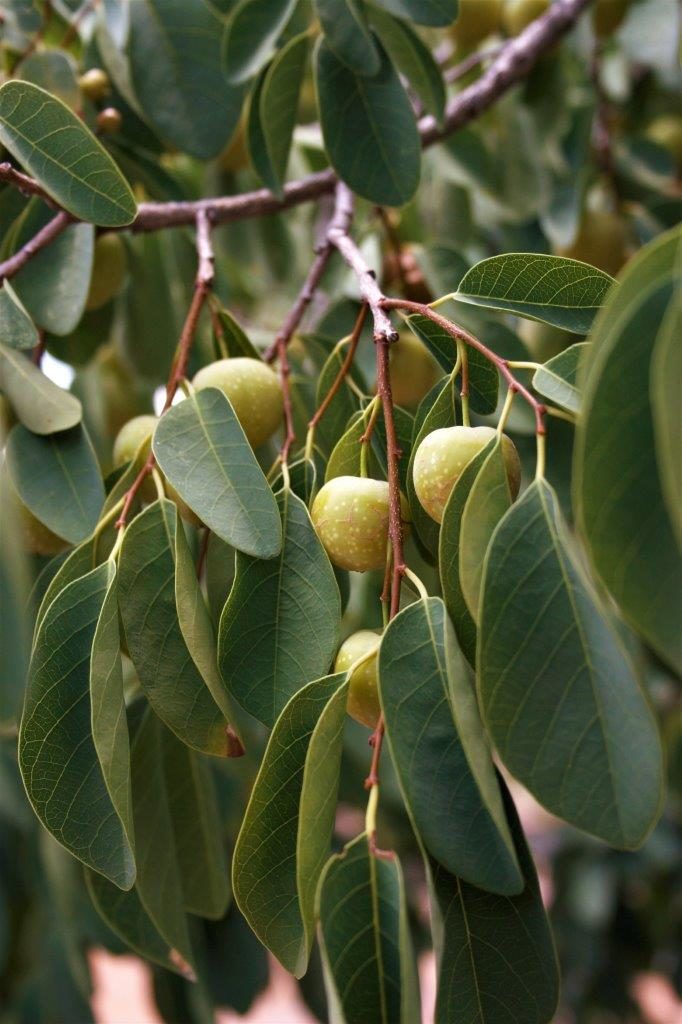
This tree is a also favoured host for the larvae of the butterfly species Abantis paradisea better known as the Paradise Skipper.
It is an attractive tree all year round. In Summer it is lush and green and in full foliage, but it will change into a fiery wonder in Autumn or Winter, displaying a multitude of earthy colours.
Lavender Fever Berry (Croton gratissimus)
These trees are synonymous with rocky ridges and are in abundance within Makweti. They are a small shrub or tree with discoloured green and white leaves, although sometimes a bright orange leaf emerges too. The leaves themselves are striking features with silvery undersides and an aromatic scent when crushed. The flowers are small cream, golden-yellow in colour and occur in long spikes up to 15cm long. The flower buds develop in the rainy season, remaining closed and conspicuous during the dry season as rusty brown spikes. The flowers open at the first rains of the following rain season.
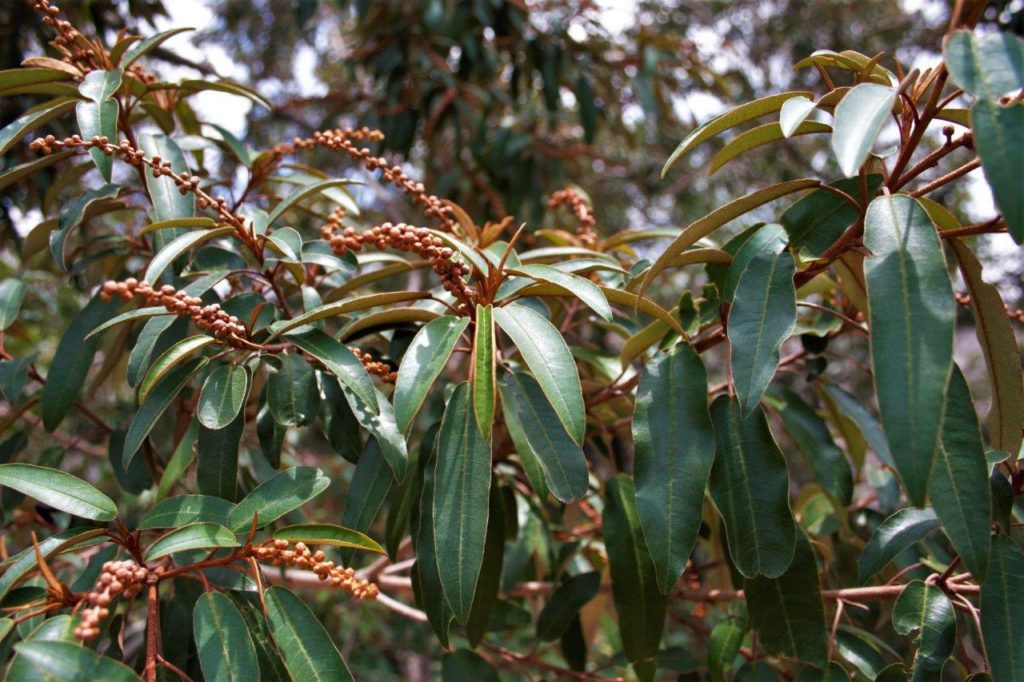
The tree provides browsing material for antelope and livestock. Elephant wondering into camp will often stop past chalet 4 and feed on the Lavender Fever Berries growing alongside the boma perimeter. There is a magnificent Lavender Fever Berry growing outside the kitchen on the pathway to chalet 3, with numerous specimens growing tall around the deck of the main lodge.
Traditional uses of these trees include the following:
- Leaves, dried and crushed were used by the San people as a perfume
- The charred and powdered bark is used to treat bleeding gums
- Cold leaf infusions are used to treat eye ailments in animals
- In Namibia the trees are used as stock feed for cattle where areas are very dry
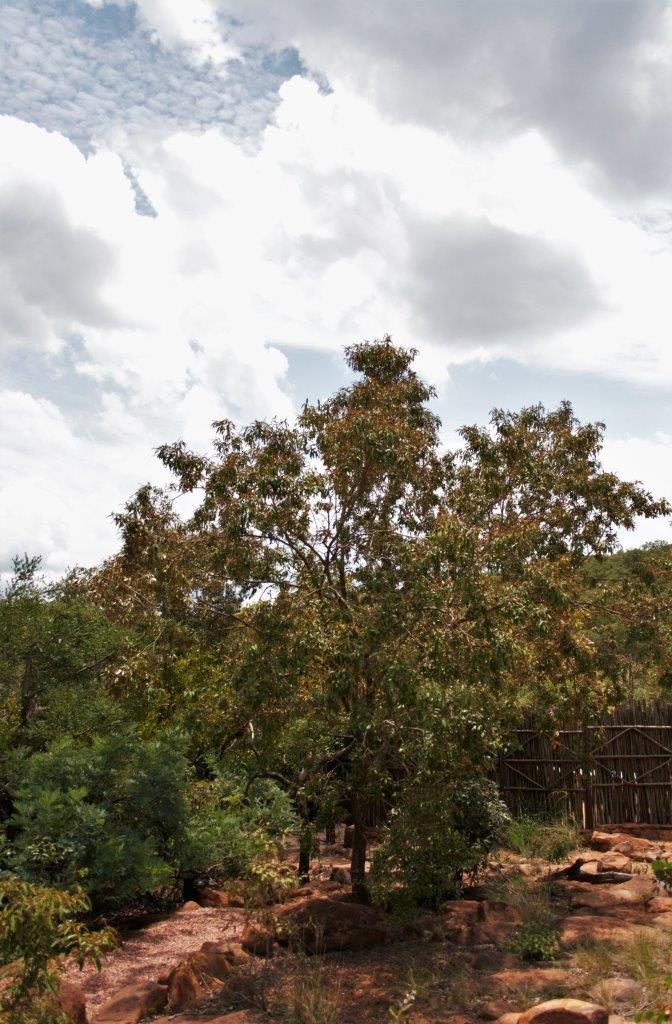
The trees are beautiful and with their striking leaves and general pleasing shape and aroma, they are used more and more in gardens. The scientific name of this tree means “most pleasant” as a result of its overall character and scent.
This tree is a favoured host for the larvae of the butterfly species Charaxis candiope candiope. better known as Emperor Butterflies or Leafwing Butterflies, of which there are many varieties.
Pride of the Cape (Bauhinia galpinii)
This striking shrub is prevalent all over the camp, and Makweti boasts many beautiful specimens.
You cannot miss them when walking to the main lodge from the Indaba, as they flank the pathway all the way down. Chalet 1 and 2 have an abundance of them growing along their pathways too.
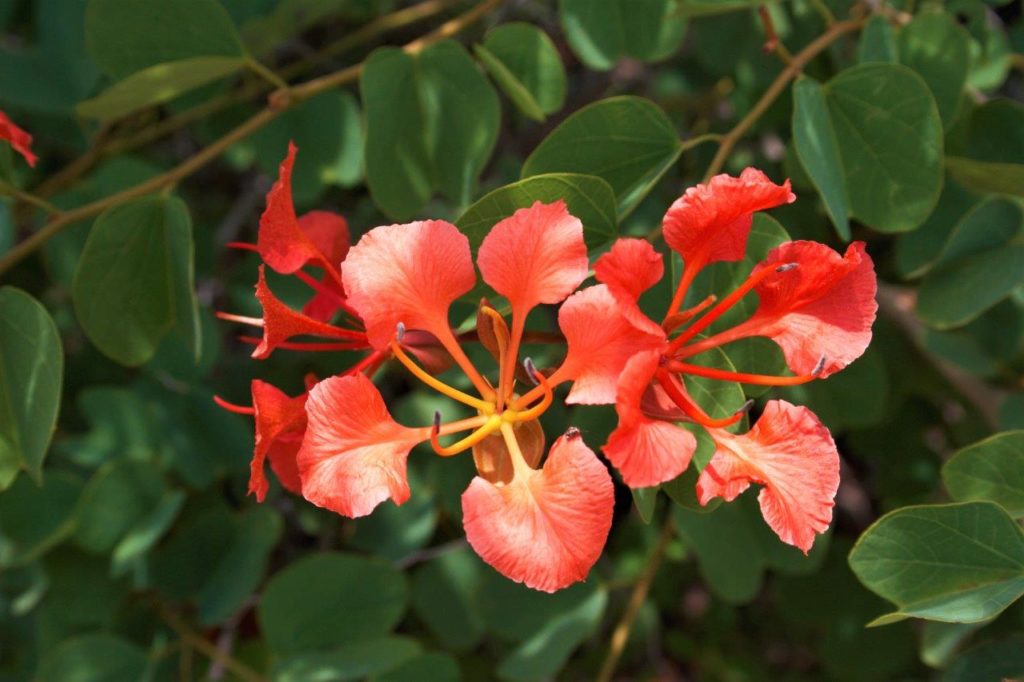
This species is a low-growing tree or shrub that is a vigorous climber, favouring hot areas of the country, mostly in the north and north-eastern parts of South Africa. It has become a popular garden species, and specimens are now seen all over the country. They are drought-resistant and able to tolerate poor soils.
Easily recognised by its leaf that is divided about ¼ of the length of the leaf and its almost heart shape appearance. The flowers are a bright salmon to brick-red colour, with paddle-shaped petals that are clustered at the ends of the branches.
Traditional uses of these trees include the following:
- The flexible branches are used for basket weaving and construction of roof trusses for grass and other huts
This shrub is a favourite host for the larvae of another butterfly species from the Charaxis Genus, Charaxis jasius saturnus, commonly known as Emperor Butterflies or Leafwing Butterflies. They are also known to breed on these shrubs too, laying eggs on the leaves.
Words and photographs: Neil Davison
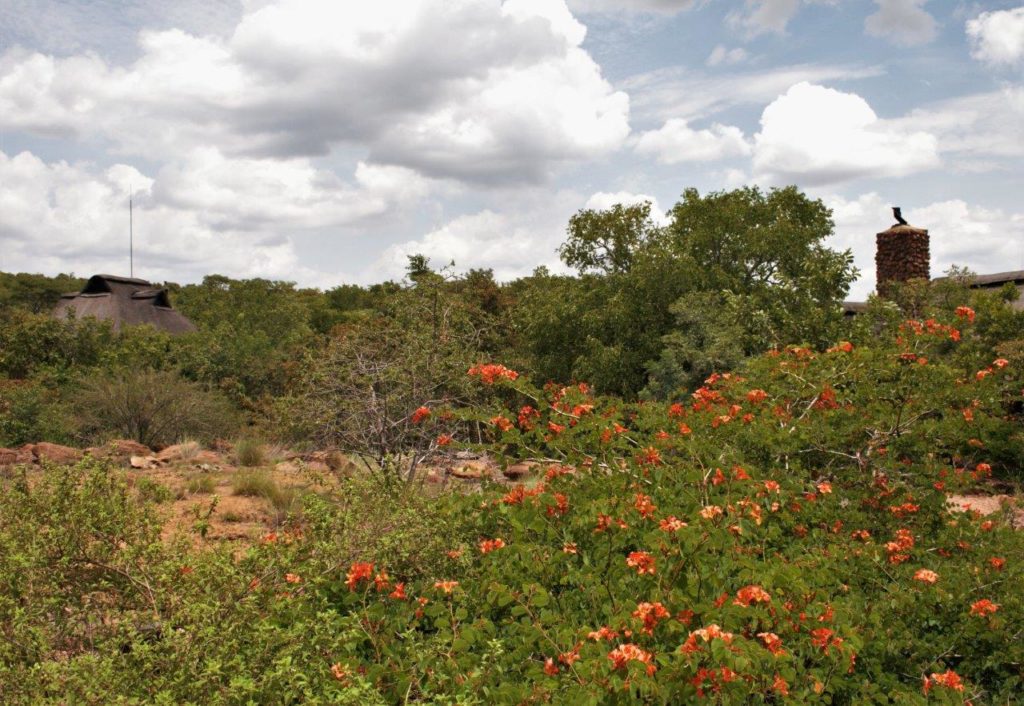
References:
- Personal observations on Welgevonden Game Reserve and other Southern African Reserves
- Field Guide to Trees of Southern Africa, Braam van Wyk, Piet van Wyk, Struik Publishers, Cape Town, 1997
- Keith Coates Palgrave Trees of Southern Africa, revised and update by Meg Coates Palgrave, Struik Publishers, Cape Town, 2002
- Photographic Guide to Trees of Southern Africa, Braam van Wyk, Piet van Wyk, Ben-Erik van Wyk, Briza Publishers, Pretoria, 2000
